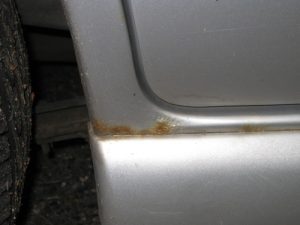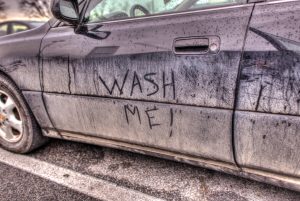
Old Man Winter
Heading into the dead of winter with ice and snow means heavy use of road deicing chemicals and other materials for much of the country. Gritty sand and ash help provide traction, while salt, chemicals and even beet juice melt or prevent freezing on road surfaces.
These agents do a number on snow and sleet, and over the past two decades the deicing chemicals themselves have changed. Traditional sodium chloride (road salt) has been augmented or replaced by calcium chloride or magnesium chloride, both of which work before and during ice/snow storms by adhering the road surface.
Additionally, road crews spread these mixtures sometimes will before an actual whether event, so there is longer and more frequent exposure to them.
The Chemical Reaction
So how do these agents melt frozen liquid? Essentially by dissolving into their constituent parts – one ion of sodium and one ion of chloride, for example. The free-floating ions work to reduce the freezing point of water. Calcium chloride and magnesium chloride, involve more complex molecules that distribute even more ions when they dissolve in water, further lowering the freezing point. In turn, they also create more effective electrolytes than sodium.
Rust Makers and More
The presence of free-floating chloride ions from the deicing salts within water expedite the electrochemical process between iron in metal and oxygen in the air that creates rust and corrosion. This risk is greatest on bare metal, such as your car’s undercarriage where road salt and other corrosive chemicals are slowly eating away crucial mechanisms. Chemicals that are easily washed off your car’s exterior tend to become embedded in your shock absorbers, settle on your wheel wells, invade door panels and rest in secret cavities and crevices you can only observe by placing your car on a lift.
Even worse, these chemicals are hygroscopic, meaning they attract and retain moisture. When they stow away in your undercarriage, they act as moisture magnets that slowly corrode any metal surfaces. The calcium chloride wicks in to any exposed wiring, eating away brake lines and suspension components.
But how do road deicing chemicals harm paint surfaces? If we were to look at a painted surface under a microscope, we would see that it isn’t a solid, impenetrable surface – it has pores. Like most matter, sheet metal expands and contracts depending on the temperature. If paint were not able to expand and contract at the same rate as the metal to which it bonds, it would crack on a particularly hot or cold day.
Now, the pores that we are talking about are too small to allow water and salt ions to penetrate onto the metal below. However, over time the ions set free in the salt dissolving process create a mild acid, which attacks the clearcoat surface. Plenty of other contaminants and impurities get into the salt slurry to further acidify it. This acid will slowly break down the clearcoat and cause it to discolor, fade, and eventually fail.
Your Best Defense
It’s estimated that the costs associated with corrosion caused by anti-icing chemicals have increased more than tenfold in recent years, according to Tom Gelinas, of Fleet Equipment Magazine.
 For those of us who drive in areas prone to wintry weather, the solution is simple: wash your car…and often. A weekly full-service wash at one of the 190+ locations featuring the IQ Automatic System (both Soft Touch and Touch Free) will remove the chemicals, grit and snow-pack from your vehicle while you watch the “show” from the comfort of your car seat.
For those of us who drive in areas prone to wintry weather, the solution is simple: wash your car…and often. A weekly full-service wash at one of the 190+ locations featuring the IQ Automatic System (both Soft Touch and Touch Free) will remove the chemicals, grit and snow-pack from your vehicle while you watch the “show” from the comfort of your car seat.
